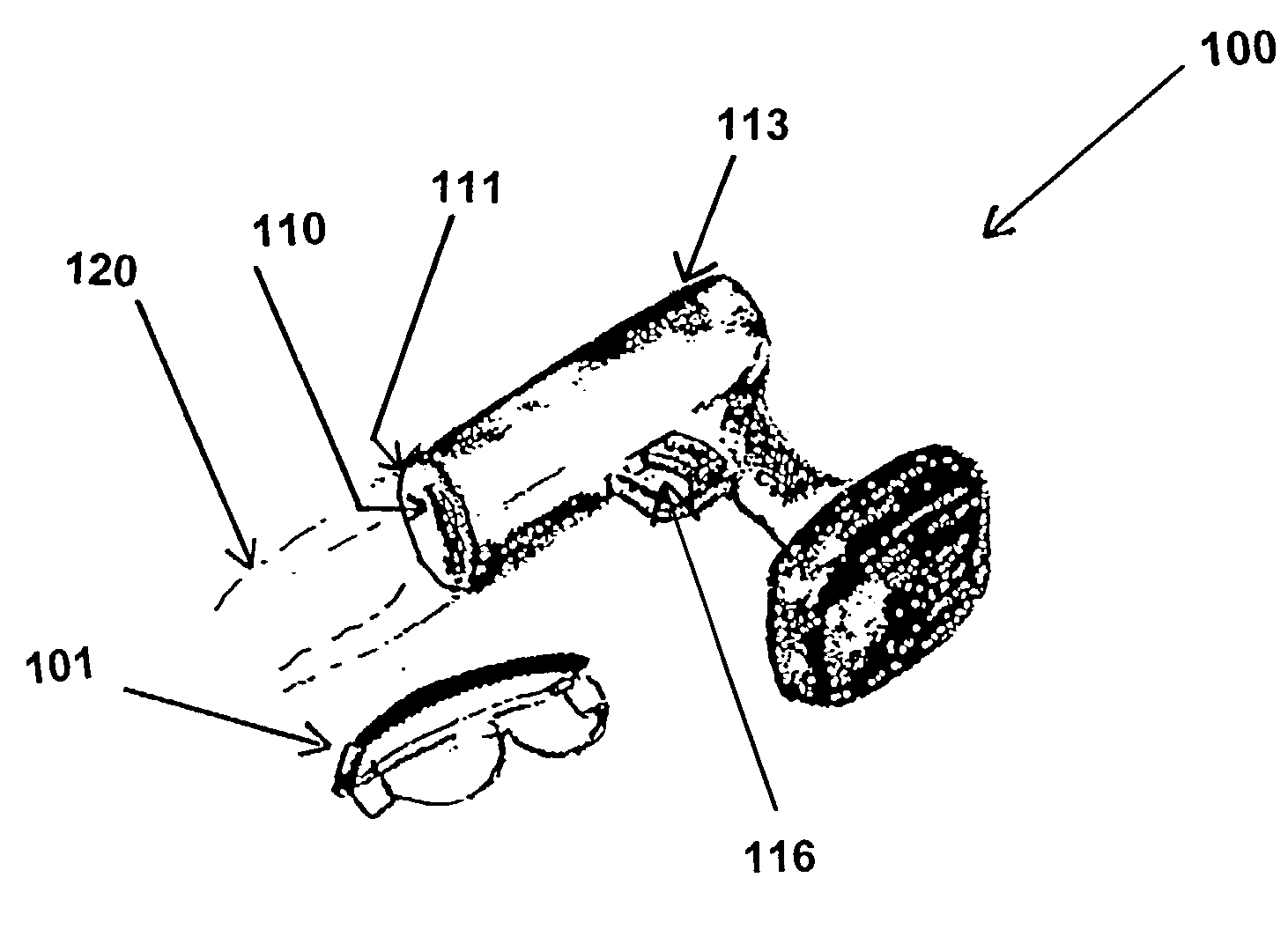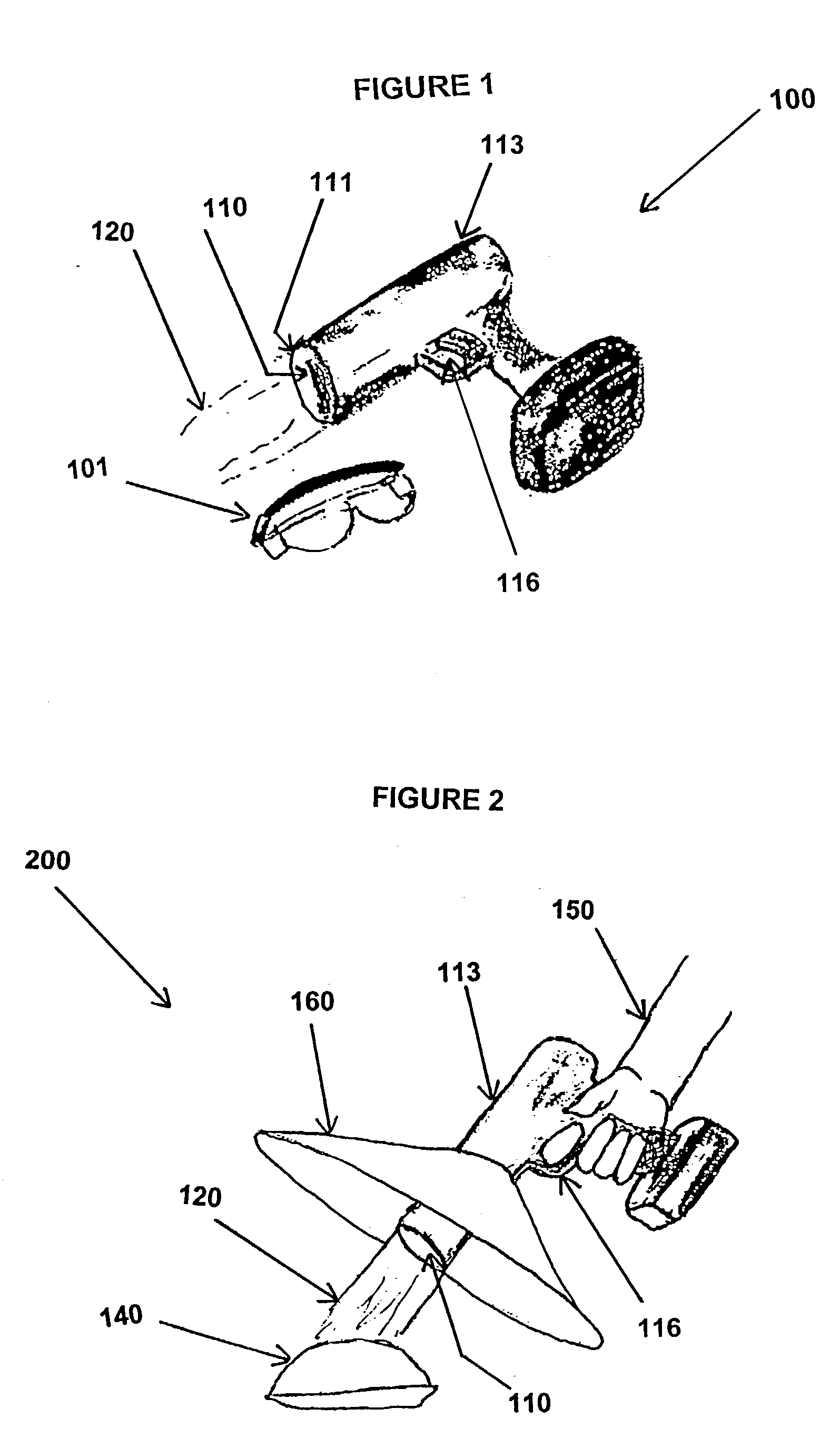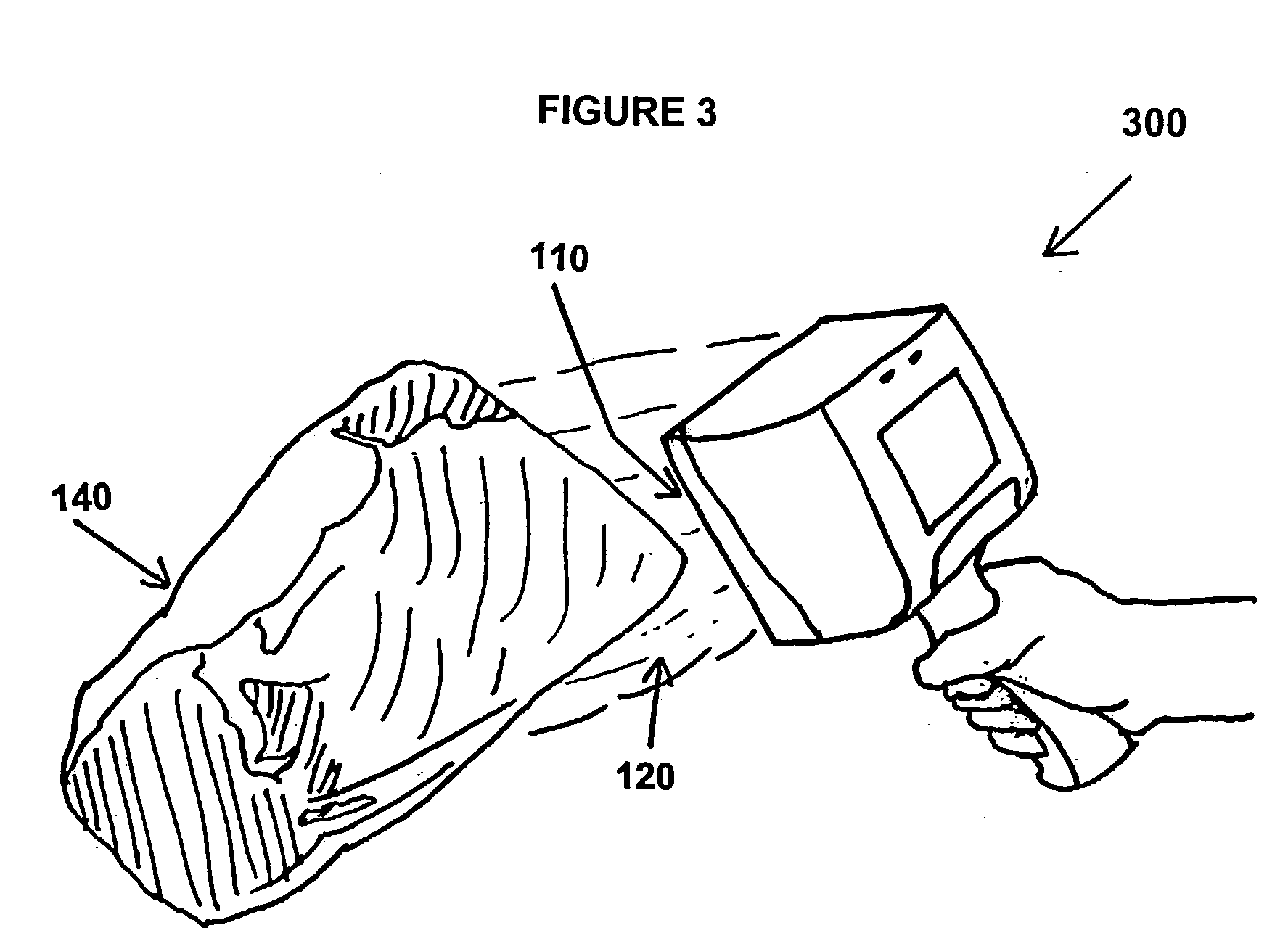Apparatus and method for detecting fecal and ingesta contamination using a hand held illumination and imaging device
- Summary
- Abstract
- Description
- Claims
- Application Information
AI Technical Summary
Benefits of technology
Problems solved by technology
Method used
Image
Examples
embodiment 100
[0032] A basic embodiment of the present invention can be better understood with reference to FIGS. 1. This embodiment 100 includes a housing 113 supporting a light source 110, and can be used with a set of eyeglasses 101 that will reject light in the 320-540 nm range. Note that the set of glasses 101 used with a preferred embodiment are not physically attached to the light source 110. Emission light 120 can be created by an array of LED's, a mercury vapor lamp, fluorescent lamps or other illumination source. For ease of use, a preferred embodiment of the light source is gun-shaped.
[0033] In using this basic embodiment 100, the user 150 dons the set of glasses 101 and aims the emission light source 110 at the surface of the object to be examined for contamination. By depressing an activation mechanism 116, the system illuminates the object to be examined with blue light 120 in the 380-470 nm range. If fecal contamination or ingesta is present on the object, the feces will fluoresce ...
example 2
[0035] In an alternative embodiment 200, as shown in FIG. 2, the user does not wear filtering glasses. Instead, the light emitting mechanism has an integrated filter element 160 which allows passage of the light indicating fecal contamination. Such element 160 can be mounted on the housing 113 of the light emitting system, or simply positioned at any point between the object to be examined and the detection system to be used. Thus, by way of example, when the detection system is the user's eye, the element would be mounted such that the user would view the object to be examined through the element. When mounted on the housing 113 of the light emitting system, we have found that a hemispherical or conical section is particularly practical for viewing the object 140 while the device blocks the blue wavelength light from the user.
example 3
[0036] A preferred embodiment of the present invention is shown in FIG. 3300. The configuration of such a preferred embodiment is shown in FIG. 4, and includes a mounting structure 113 supporting a diffuse light source 110 capable of generating light in the 380-470 nm (blue) range. Emission light from light source 110 can be created by an array of LED's, mercury vapor lights, fluorescent lamps any other source well-known to those in the art to be capable of generating light in the appropriate range. In a particularly preferred embodiment, the light is emitted from an array of light emitting diodes with a peak emission wavelength of 420 nm which are positioned so as to permit illumination of the object of interest when the object is placed in the path of the emission light emitted from the first end 111 of supporting structure 113.
[0037] The preferred embodiment also includes a detection device 130 such as a photodetector or CCD sensitive to at least 660-680 nm light. Without being l...
PUM
 Login to View More
Login to View More Abstract
Description
Claims
Application Information
 Login to View More
Login to View More - R&D
- Intellectual Property
- Life Sciences
- Materials
- Tech Scout
- Unparalleled Data Quality
- Higher Quality Content
- 60% Fewer Hallucinations
Browse by: Latest US Patents, China's latest patents, Technical Efficacy Thesaurus, Application Domain, Technology Topic, Popular Technical Reports.
© 2025 PatSnap. All rights reserved.Legal|Privacy policy|Modern Slavery Act Transparency Statement|Sitemap|About US| Contact US: help@patsnap.com



